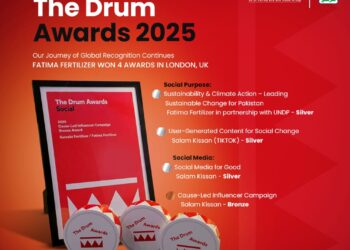Islamabad – In the face of rising geopolitical tensions, weakening currencies, and unstable stock markets, global investors and sovereign nations are once again turning to gold as the ultimate safe haven. Amid an intensifying global economic war and widespread uncertainty, gold has emerged as the asset of last resort, experiencing a historic surge in demand and price.
Gold Prices Hit Record High Amid Global Economic Unrest
As of April 2025, the international price of gold has skyrocketed to an unprecedented $3,300 per ounce, marking a new milestone in the precious metal’s history. This price surge is not a random spike, but rather the result of compounded global financial stress, political unpredictability, and faltering investor confidence in traditional financial instruments.
Historically, gold has been seen as a store of value during times of crisis, offering a hedge against inflation, currency devaluation, and market volatility. Its tangible, universally recognized nature makes it a reliable refuge for both institutional and retail investors in periods of uncertainty.
US Economic Instability Fueling Market Anxiety
One of the primary triggers of the current shift toward gold is the economic instability in the United States, exacerbated by policy decisions under former President Donald Trump. While Trump is no longer in office, many of the aftershocks of his presidency—particularly protectionist trade policies, sanctions, and erratic financial governance—are still being felt across global markets.
Under Trump, trade tensions with China, the European Union, and other major economies escalated, leading to multiple rounds of tariffs and counter-sanctions. These measures disrupted global supply chains and contributed to a decline in investor confidence, particularly in American financial instruments like the US dollar and Treasury bonds.
Interestingly, US Treasury bonds, traditionally viewed as a safe-haven asset, are now being offloaded at a surprising rate. The selling spree indicates a shift in sentiment where even long-standing benchmarks of financial security are being questioned, further pushing investors toward the reliability of gold.
A New Era of Economic Warfare and Financial Decoupling
The world is currently experiencing what many analysts term a “new economic cold war,” where trade, finance, and technology have become weapons of statecraft. This new era of economic warfare has seen nations prioritizing self-reliance, supply chain diversification, and foreign reserve restructuring, with gold playing a central role.
Amid concerns about overdependence on the US dollar, many nations have started diversifying their foreign exchange reserves, opting to hold more gold and fewer dollar-based assets. This decoupling from the US-centric financial system reflects growing fears that economic sanctions—now a frequently used geopolitical tool—could suddenly freeze a country’s access to its own reserves.
Central Banks Accelerate Gold Purchases
In response to this uncertain global climate, central banks worldwide have significantly increased their gold holdings. According to the latest data from the World Gold Council, more than 290 metric tons of gold were purchased by central banks in the first quarter of 2025 alone—a new quarterly record.
Key buyers include countries such as China, Turkey, India, Russia, and Germany, who have not only been stockpiling gold but also repatriating their existing reserves from foreign vaults.
Germany Leads the Way in Repatriation of Gold Reserves
One of the most notable developments in the global gold narrative is Germany’s aggressive repatriation strategy. Over the past few years, Germany has moved approximately 670 tons of gold from storage facilities in New York and Paris back to Frankfurt, underscoring a broader trend of sovereignty over national reserves.
This move is driven by increasing domestic political pressure and the fear that geopolitical tensions could restrict access to foreign-stored assets in times of crisis. The Bundesbank, Germany’s central bank, has also indicated plans to reclaim the remaining gold reserves still held overseas.
This trend of repatriation is not unique to Germany. Other nations are following suit, reflecting a widespread concern over geopolitical instability and a desire for greater control over monetary assets.
China’s Silent Gold Accumulation Strategy
China, the world’s second-largest economy, has been discreetly increasing its gold holdings for over a decade. In 2025, the People’s Bank of China (PBOC) revealed that it had increased its official gold reserves by more than 100 tons, continuing its strategy of diversifying away from the US dollar.
Gold plays a critical role in China’s long-term economic strategy, which aims to shield the nation from potential Western sanctions and reduce reliance on the Western-dominated financial system. China’s push for a yuan-backed global trade ecosystem, supported by gold reserves, signals a profound shift in global financial power structures.
Implications for Emerging Economies like Pakistan
For countries like Pakistan, the surge in gold prices presents both opportunities and challenges. On one hand, gold imports may become more expensive, potentially impacting the trade balance and foreign exchange reserves. On the other hand, if Pakistan increases its gold reserves, it could enhance financial stability and reduce vulnerability to external shocks.
Additionally, Pakistan’s domestic gold market, which is deeply linked to consumer demand for weddings and cultural events, is likely to feel the impact of these global trends. Rising prices may dampen local consumption, but also increase the value of existing household assets.
The Dollar’s Decline: A Turning Point?
The weakening of the US dollar in global markets is a significant contributing factor to the rise in gold’s appeal. With the dollar losing ground against major currencies, investors are looking for alternative assets that hold intrinsic value—and gold fits that bill perfectly.
This shift could mark the beginning of a long-term trend where the dollar’s dominance is gradually eroded, especially as countries explore alternative currencies and digital assets for trade settlements.
Is Gold a Bubble or a Strategic Shift?
While some financial analysts caution that gold prices may be inflated due to panic buying, the broader structural shifts in the global economy suggest otherwise. Unlike past rallies driven by speculative trading, the current demand for gold is state-led and strategy-driven, making it a potentially more sustainable and long-term trend.
With deglobalization, financial fragmentation, and technological bifurcation becoming more pronounced, gold’s role as a neutral and universally accepted store of value is only set to grow.
Conclusion: Gold Reclaims Its Throne in Global Finance
In the midst of intensifying economic warfare, trade sanctions, geopolitical rivalries, and currency instability, gold has once again proven its resilience and strategic importance. From central bank vaults in Frankfurt to investment portfolios in Beijing, gold is reclaiming its place at the heart of the global financial system.
As global uncertainty deepens, both individual investors and sovereign states are hedging against the unknown by turning to a centuries-old asset that continues to symbolize trust, value, and stability—gold, the last resort in times of crisis.

























